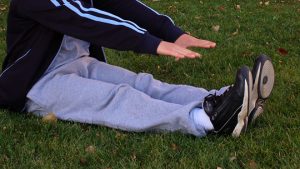12.3 How to Measure Flexibility

Measuring flexibility is different for each joint in the body. Exercise and sports medicine professionals often use specialized tools and techniques to determine if an individual’s flexibility for a specific joint is at, above, or below average. The purpose of testing different joints is to understand how the muscles are working and whether you may be at risk for injury or pain. For example, measuring the flexibility of the hamstring or abdominal muscles can indicate the risk of lower back pain or injury, or assessing ankle flexibility can help you learn about possible discomfort with activities like running or swimming (Swain et al., 2014). It’s important for a trained professional to conduct these tests, as they know how to accurately follow the procedures for flexibility measurements and can properly guide you in understanding what your numbers mean. If you are experiencing tightness or pain in your muscles or joints, talk to a professional about the potential benefit of incorporating a stretching routine into your week.
Ultimately, an ideal level of flexibility does not exist; flexibility is important as a means of injury-prevention and pain relief, but ideal levels are dependent entirely on the individual, not on measurable, one-size-fits-all goals. A personal means of measuring flexibility would be to simply note subtle changes in how you feel over time, but again, increasing flexibility isn’t necessarily the goal. Maintaining joint and muscle health to avoid injury and feel your best is the goal; flexibility supports the other components of fitness.
Self-Assess Your Understanding
- How is flexibility measured?
- Why might someone measure flexibility?

